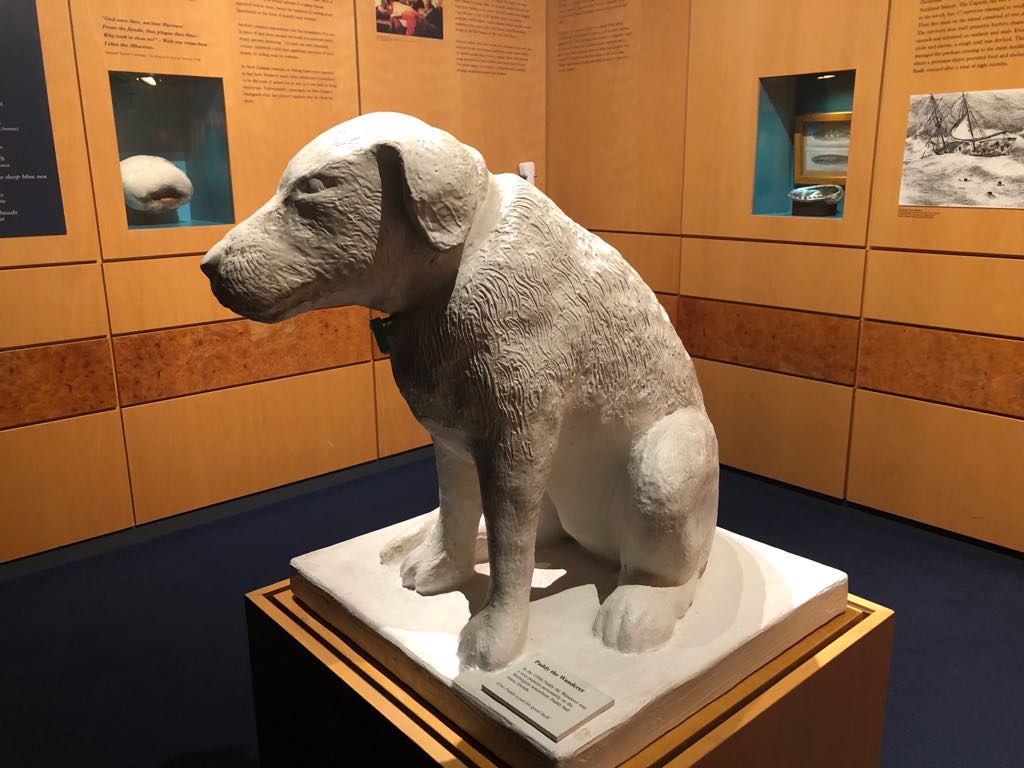
Paddy the Wanderer (and other dead animals) in the Museum
By Nik Bullard, History Communicator, Museums Wellington
On 17 July 1939, Paddy the Wanderer died. Eighty years later, we pay tribute to this remarkable canine and discover why his legacy is so enduring. I’ll also use this opportunity to talk about our other animals and animal-related objects on display in the Museum. This in turn offers an interesting insight into how the treatment of animals, especially in captivity, has changed over time.
Paddy the Wanderer – First floor
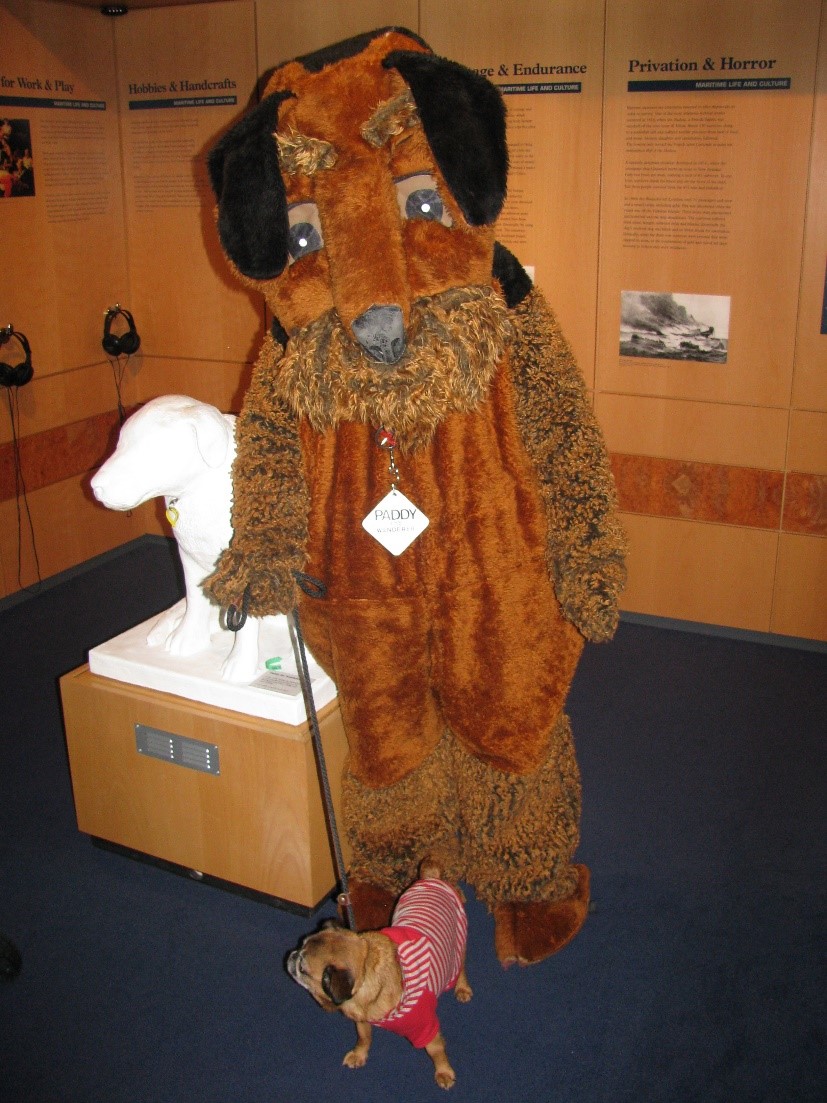
Paddy statue, staff member dressed as Paddy and unknown dog. Photo credit: Museums Wellington
Against one wall of the NZ Academy of Fine Arts in Wellington there’s a memorial to Paddy the Wanderer. It’s made from several granite stones salvaged from London’s first Waterloo Bridge when it was demolished. But who was Paddy, and how did he earn himself such a memorial on Wellington’s waterfront?
Paddy was an Airedale Terrier believed to have been once called ‘Dash’. According to his biographer, Dianne Haworth, he was the pet of young Elsie Marion Glasgow, daughter of a seaman, until her death in 1928 at the age of three. Soon after, Dash ran away from home and, being familiar with the Wellington docks, settled in amongst the familiar faces of the sailors and workers.
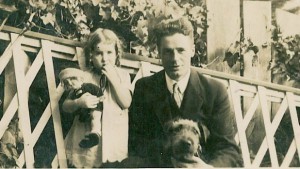
Elsie Glasgow with her dog Dash, and father John, circa 1927. Photo credit: https://www.nzrentacar.co.nz/blog/travel-tourism/remembering-paddy-the-wanderer.html
He quickly befriended cabbies, watersiders, and seamen, who began referring to him as Paddy. He was quite a traveler – he visited many other New Zealand ports, and is thought to have crossed the Tasman on more than one occasion – some say he even went as far as San Francisco! But he always found his way back to Wellington.
Just as Paddy adopted the waterfront, the community adopted him. Taxi drivers and dockyard employees raised money for a collar and registration. This went on for years until the Wellington Harbour Board took responsibility for Paddy and bestowed on him the title of ‘Assistant Night Watchman In Charge of Pirates, Rodents and Smugglers’.

Paddy in Wellington, 1939. Photo credit: https://www.nzrentacar.co.nz/blog/travel-tourism/remembering-paddy-the-wanderer.html
Paddy would often make his way about town by hopping on and off trams or riding with taxi drivers – and in 1935 he was even taken up in a Gipsy Moth bi-plane. Placed in the forward cockpit, he was held by one of his friends – a taxi driver – to ensure he didn’t panic and jump out.
‘Paddy was extraordinarily intelligent,’ the Evening Post reported on the day he died. ‘For instance, he knew the traffic lights and would not cross a street until the green showed.’ His body was wrapped in a shroud and put in a coffin with the words ‘Paddy the Wanderer – at rest’, then driven by a procession of twelve taxis, bringing downtown Wellington traffic to a standstill. ‘Fifty or sixty watersiders and seamen watched the cortege start on its short journey from Queens Wharf to the incinerator. A traffic officer led the way’ the Evening Post continued. It was ‘no mock affair but a touching tribute to a good comrade’.
You can find out more about this remarkable dog in Paddy the Wanderer – The true story of the dog that captured the heart of a city by Dianne Haworth, coming soon to Wellington Museum’s shop and online.
Chimps tea party – The Attic
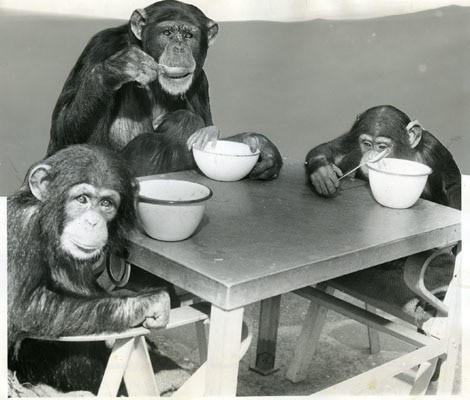
Chimp’s tea party. Photo credit: http://www.stuff.co.nz/dominion-post/news/local-papers/the-wellingtonian/5207596/When-the-chimp-stole-the-show . What this photo doesn’t show is that the chimps are all wearing collars that are chained to the chairs – they are wild animals after all.
You won’t see chimpanzees having a tea party in a zoo today, but they were a major attraction at Wellington Zoo for 20 years from the mid-1950s. So great was the interest in this that it saw one of the chimps, Breena, help launch the first live broadcast of television in Wellington in 1961.Although adults may remember the chimps’ tea parties fondly, times and attitudes have changed. Nowadays, the focus of zoos has shifted largely from housing animals for human entertainment to protection and conservation, especially of endangered species. This in turn has seen animals housed in far more ‘natural’ settings.
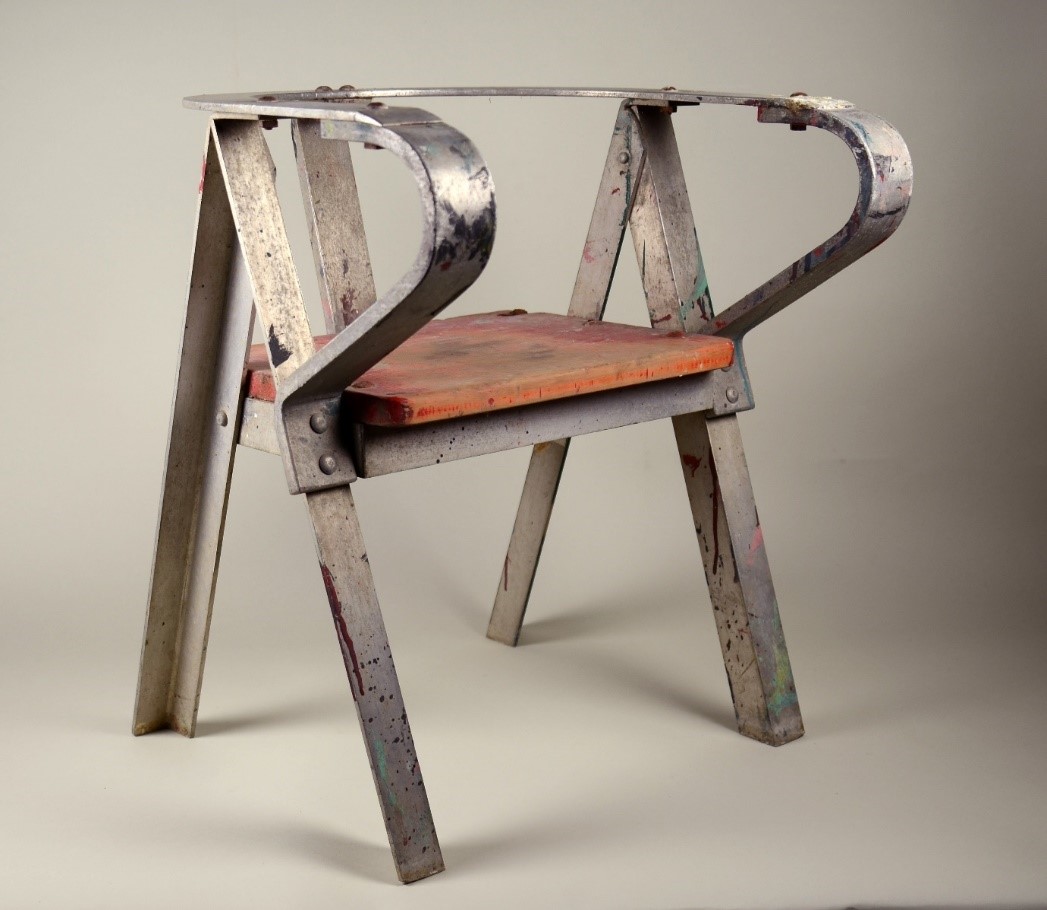
Chimp’s chair. Museums Wellington collection. Photo credit: Museums Wellington
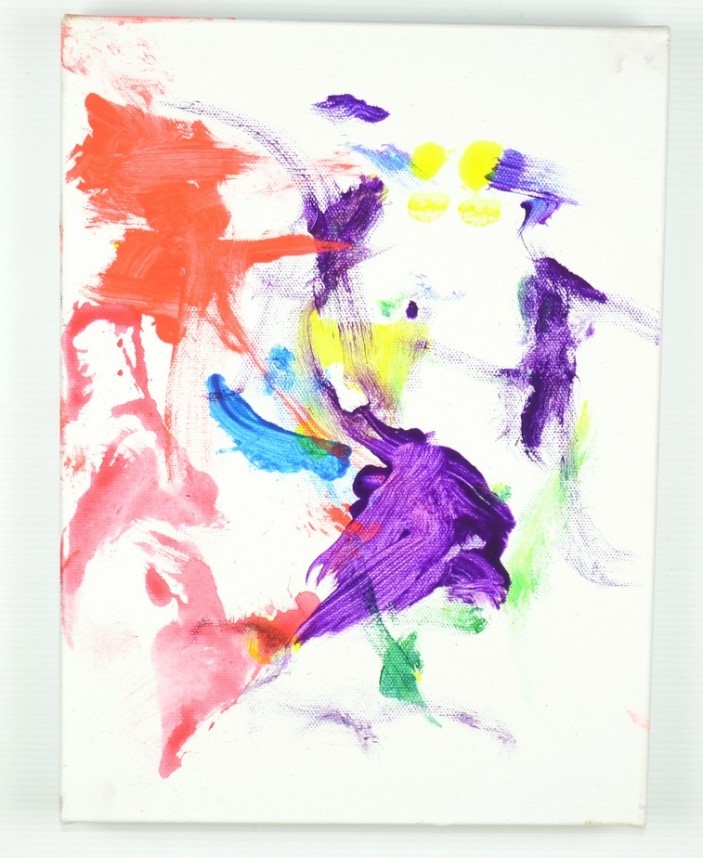
Paintings created by chimpanzees Alexis and Sam at Wellington Zoo. Museums Wellington collection. Photo credit: Museums Wellington
Kamala the elephant – Telling Tales on the Ground floor
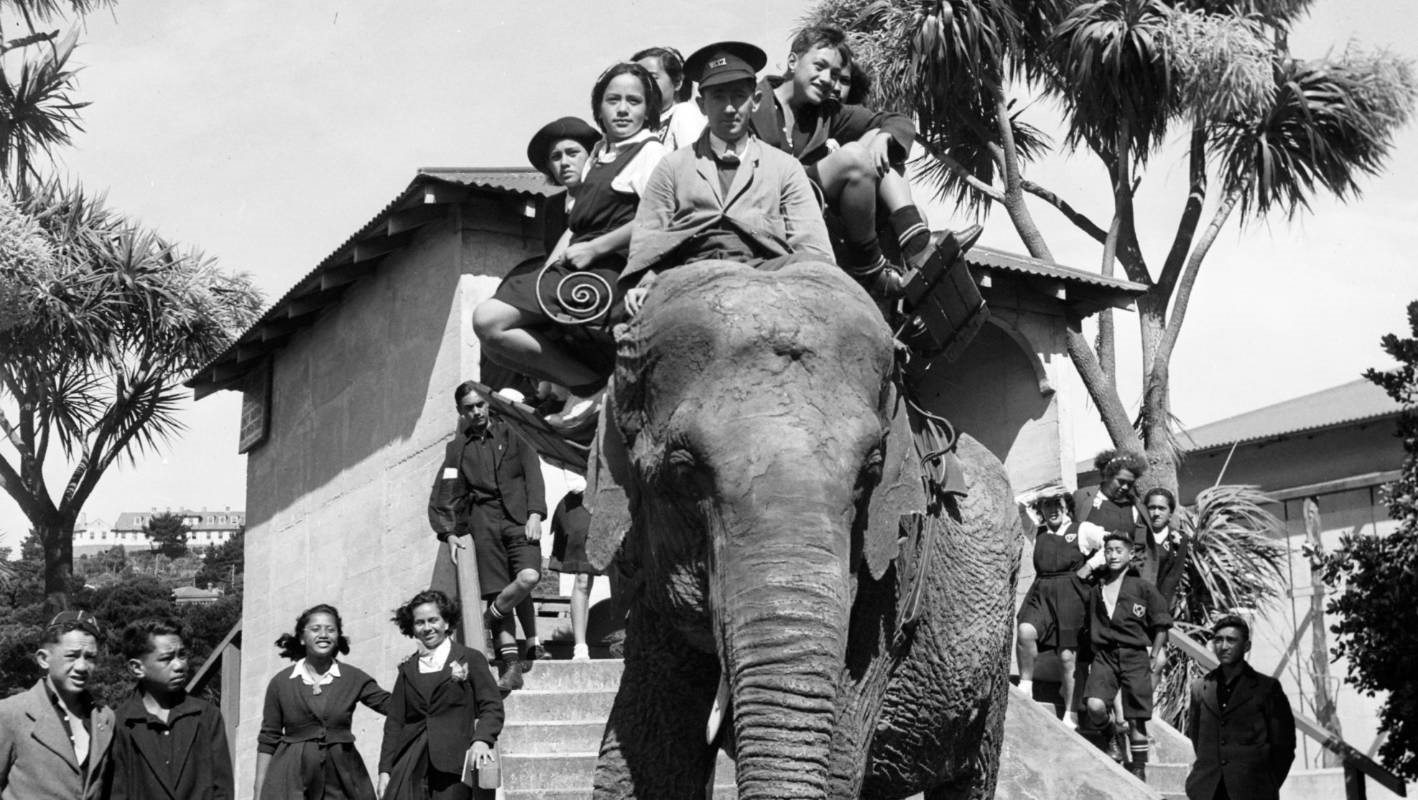
Kamala at Wellington Zoo. Photo credit: https://www.stuff.co.nz/environment/108751100/wellington-zoo-says-some-animals-will-become-extinct-without-zoos
The death in 1983 of Kamala the elephant, Wellington Zoo’s star attraction, marked the end of an era when zoos existed mainly to entertain, and elephants were an essential element of that. Kamala arrived in Wellington in 1953, a gift from Indian women grateful for support from Corso in New Zealand. For 30 years Kamala (whose name recalls the Indian goddess of prosperity) lived in the Elephant House, a replica of a domed Indian building.
From here she gave children rides, an experience that, along with the chimps’ tea party, was often the highlight of a visit to the zoo. At the age of 52 Kamala died from a ruptured spleen. She was greatly missed and children especially hoped for a replacement. However, the treatment of animals had changed. Elephants need company and space, and both are prohibitively expensive.
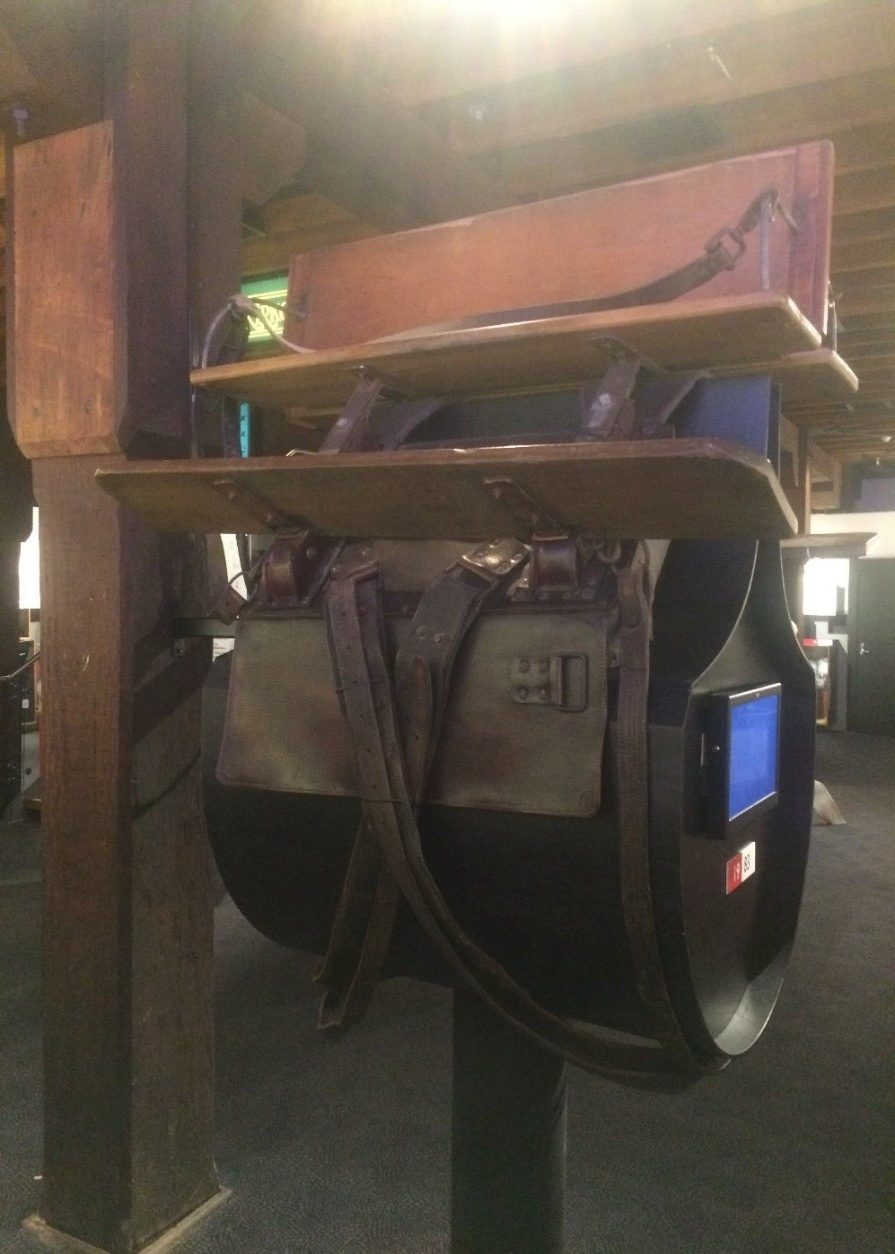
Kamala’s saddle on display. Museums Wellington collection. Photo credit: Museums Wellington
Discovered during the saddle’s restoration in 2001, these underpants were among several items used as stuffing. Sidney James Manning, a saddler of Courtenay Place was commissioned by the Zoo to tailor make the saddle for Kamala after it arrived from India in 1953.

Stuffing from Kamala’s saddle. Museums Wellington collection. Photo credit: Museums Wellington
King Dick and Rusty – The Attic
Many museums have at least one stuffed animal in their collection – they’re remnants from Victorian times when interest in new theories of evolution generated massive natural history collections. Often these animals were acquired by nefarious means – ie hunted, killed, stuffed and sold to museums (like New Zealand’s now extinct huia bird!)
I am pleased to say that Wellington Museum’s stuffed animals were not acquired by such dodgy means and take pride of place in The Attic. The Kings of our Museum are King Dick and Rusty the lions.
Named after Prime Minister Richard (‘Dick’) Seddon, male lion King Dick was the first animal housed at Wellington Zoo. After he died in 1921, he was stuffed, mounted and displayed at the Dominion Museum for some years.
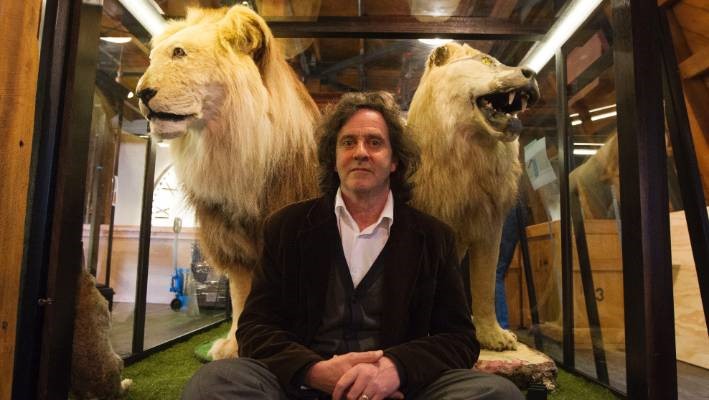
King Dick and Rusty in the Attic at Wellington Museum with Museums Wellington Director, Brett Mason. Photo credit: https://www.stuff.co.nz/dominion-post/capital-life/72811683/null
Rusty was donated to us from Wellington Zoo in 2013. He lived a long and healthy life at the Zoo before his death in 1997. He was preserved and featured there before coming to the Museum. Rusty signifies a change in thinking towards animals. He was the last to be stuffed by the Zoo—the end of a practice that stretched back to King Dick.
As it’s the school holidays, why not bring the kids to the Museum and see if you can find all our animals and animal-related objects located over the various floors.